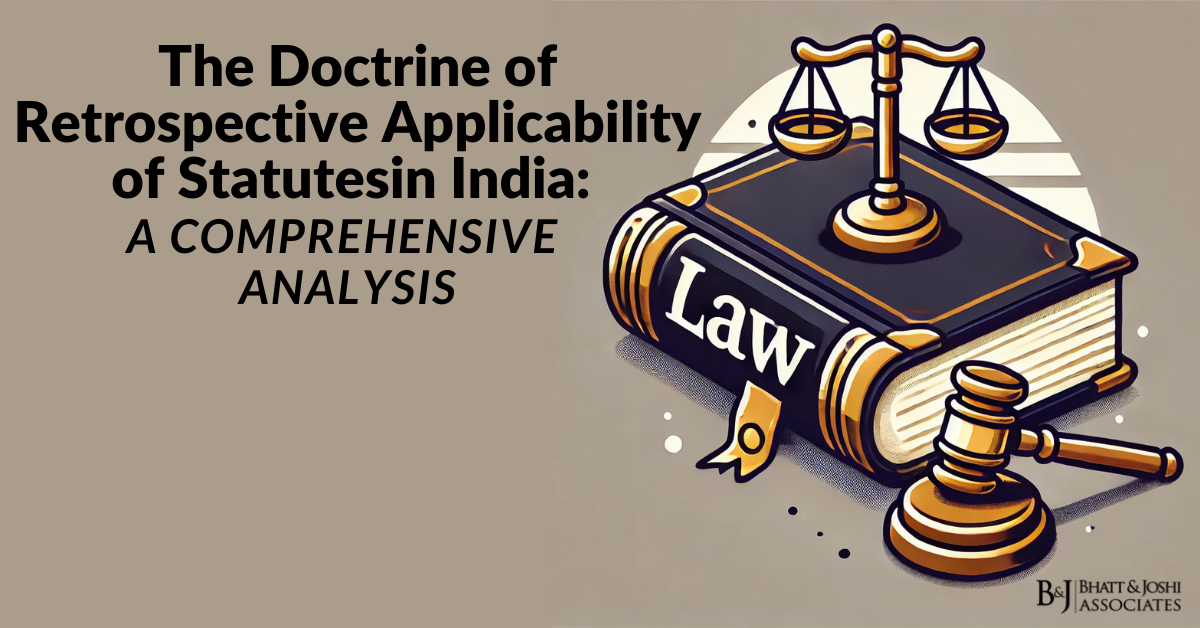Introduction to Competition Law:
- The Monopolies and Restrictive Trade Practices Act, 1969 was repealed on January 13, 2003, when the Indian Parliament passed the Competition Act, 2002. On March 31, 2003, it became operative. Two amendments were made to the Competition Act, 2002 after it was passed: the Competition (Amendment) Act of 2007 and the Competition (Amendment) Act of 2009. It was the outcome of India’s efforts to liberalize the economy and go globally. The Act’s main objective is to restrict an organization’s or company’s anti-competitive behavior that hinders competition in the Indian market. In addition, the Act aims to protect consumer interests, preserve market freedom, and promote and sustain market competition in our nation.
- India passed the Competition Act, 2002 with the intention of enforcing anti-competitive behavior and improving World Trade Organization (WTO) agreements. The Competition Commission of India (CCI) has been established by the Act as a market regulator tasked with preventing and managing anti-competitive behavior throughout the nation. It also creates the quasi-judicial Competition Appellate Tribunal (COMPAT), which is charged with deciding appeals against any directive or ruling made by the CCI and delivering its decision.
History and Evolution of Competition Act in India:
The Monopolistic and Restrictive Trade Practices Act, 1969
- The Monopolies and Restrictive Trade Practices Act of 1969 (MRTP Act) was India’s first competition law. It took effect on June 1, 1970, aiming to prevent the concentration of economic power in a few hands and to ban monopolistic and discriminatory practices that could negatively impact the public.
- Monopolistic trade practices refer to dominant market behaviors where a single firm or a small group of firms (three) attain a leading position within the market. These firms can then exert control over the market by either eliminating competitors or manipulating prices and product output.
- Restrictive trade practices involve collaborative actions among two or more organizations aimed at avoiding market competition, regardless of their market share. Such practices are considered harmful to public interests.
- The MRTP Act was the first significant piece of legislation intended to regulate unrestricted trade. Its purpose was to distinguish between restrictive and monopolistic trade practices.
Abolition of MRTPC Act in 1991
- An important turning point for Indian markets in the rapidly globalizing world came with the implementation of economic liberalization in 1991. India faced more competition from both domestic and foreign sources after trade restrictions were abolished. India decreased government intervention, opened up chances for industry and foreign investment, and established a number of new economic policies to help allow globalization. The competitive structure of the nation witnessed substantial modifications as a result of these new initiatives, which included:
- The requirement that MRTP Industries perform a pre-entry evaluation of investments was eliminated by the amendment to the Monopolies and Restrictive Trade Practices Act.
- The extent to which MRTP limitations extend to mergers, acquisitions, and combinations; and the requirement for government approval in order to establish and expand new businesses.
- Establishing a competition legal framework that was more in accordance with global norms and relevant to domestic economic factors became essential after economic liberalization in 1991.
Overview of Competition Act, 2002
Need of competition act, 2002:
- The Monopolies Inquiry Commission was established in April 1964 under Justice KC Das Gupta, a Supreme Court judge. Its goal was to investigate the impact and prevalence of monopolistic and restrictive trade practices in key sectors of the Indian economy.
- The Monopolies and Restrictive Trade Practices Act of 1969 aimed to curb the concentration of wealth and restrict monopolistic practices. However, its definitions of ‘monopolistic practice’ were considered outdated. As a result, there was a need for a new competition law in India. In response, the Competition Act was introduced in the Lok Sabha on August 6, 2001, with the intent of addressing these issues.
- The Competition Act of 2002 was enacted and later amended twice: initially by the Competition (Amendment) Act of 2007 and subsequently by the Competition (Amendment) Act of 2009. The foundation the Competition Act, 2002 delivers for the establishment of the Competition Commission and the resources it offers to stop anti-competitive behavior and promote healthy competition in the Indian market are two of its primary characteristics.
Objectives and Salient Features of Competition Act 2002
- The Act aims to give the necessary legal safeguards and procedures to assure that competition laws are followed, to stop anti-competitive behavior, and to make such conduct penalized. The Act safeguards fair and unencumbered competition, which in turn safeguards trade freedom.
The Act aims to stop government action that isn’t necessary as well as monopolies. The Competition Act of 2002’s main objectives are:
- To provide a framework for the Competition Commission’s establishment.
- to promote market competition and prevent monopolies.
- To protect the individuals and entities’ freedom of trade in the market.
- to safeguard the interests of consumers
Salient Features
- Anti-Competitive Agreements
Anti-competitive agreements occur when two or more companies in the same market agree to fix prices, reduce supply, or engage in other practices to manipulate the market for their benefit. This reduces market competition and harms consumers.
According to Section 3 of the Competition Act, 2002, such agreements are defined as follows: “No enterprise or association of enterprises or individuals may enter into an agreement regarding production, supply, distribution, storage, acquisition, or control of goods or provision of services that may negatively impact competition in the Indian market.”
These agreements are termed Appreciable Adverse Effect on Competition (AAEC) agreements and are considered void under the Act. AAEC agreements include those that:- Directly or indirectly affect purchase or sale prices,
- Limit production, supply, technical development, or service provision,
- Result in bid rigging or collusive bidding.
The Competition Act, 2002 regulates two main types of agreements: horizontal and vertical. Horizontal agreements, as per Section 3(3), involve businesses at the same production or distribution level and may be presumed anti-competitive. Examples include price fixing, market sharing, bid rigging, and cartels. Companies must demonstrate that their agreements do not significantly harm competition. Vertical agreements, covered under Section 3(4), occur between firms at different levels of the supply chain and are generally permissible unless they significantly impact competition. Permitted vertical agreements include tie-in agreements, exclusive supply and distribution agreements, refusal to deal, and maintenance of resale prices.
- Abuse of Dominant Position
Section 4 of the Competition Act prohibits the abuse of a dominant position. It defines dominant position as a situation where an enterprise has significant power in the Indian market that allows it to:- Operate independently of competitive forces,
- Influence competition, consumers, or the market in its favor.
An example of abuse of dominant position is predatory pricing, where a dominant enterprise engages in anti-competitive acts.
The key difference between anti-competitive agreements and abuse of dominant position is that anti-competitive agreements involve two or more parties and can occur between any firms, without necessarily involving a dominant firm. In contrast, abuse of dominant position can be carried out by a single enterprise, provided it holds a dominant position in the market.
- Competition Commission of India:
The Competition Commission of India (CCI) was established under the Competition Act, 2002, as a statutory body responsible for enforcing the Act and imposing penalties. It was created to promote a healthy competitive environment following economic liberalization under the Vajpayee government.
The Commission consists of a chairman and between 2 to 6 board members, all of whom must have at least 15 years of experience in their fields.
The CCI’s objectives, duties, and powers are detailed in the Competition Act, 2002. Its primary role is to maintain a fair and competitive market environment in India and to penalize actions that undermine this objective.
Its responsibilities as a quasi-judicial body include the following:
- Prevent any actions that might negatively affect the competition.
- Promote and uphold competition in the market.
- Protect the interests of every customer.
- Protect the right to commercial liberty.
- Examine issues pertaining to or associated with commerce.
- Combinations and Their Regulation
Under Section 5 of the Competition Act, 2002, a combination refers to the active or passive acquisition of shares, voting power, resources, or control over management or assets of multiple enterprises by one or more entities. It encompasses mergers or amalgamations among companies. In the context of competition law, a combination involves:
- Merger through Absorption: This is when one business absorbs another, resulting in the absorption of the latter’s assets and operations while the acquiring business retains its identity.
- Merger by Consolidation: This type involves the creation of a new organization from two or more businesses, where the original entities cease to exist, and a new company is formed.
The Competition Act regulates these combinations to prevent adverse effects on market competition with the following rules:
No organization can engage in a merger that may significantly harm competition.
Section 6(1) prohibits combinations that could adversely affect competition in the relevant market and declares such combinations void.
Any proposed amalgamation must be approved by the Competition Commission of India (CCI).Before the CCI approves or disapproves a merger, the following steps must be taken:
- Provide notice to the Commission.
- The CCI will conduct an investigation as per Section 29 of the Act.
- If the CCI concludes that the merger does not significantly harm competition, it will approve the combination.
Key Amendments in Competition Act in 2023
In March 2023, the Lok Sabha passed the Competition Amendment Bill, which received presidential assent in April 2023, becoming the Competition Amendment Act, 2023. The Act modifies the Competition Act, 2002 with the following key changes:
- Regulation of Mergers and Acquisitions: This amendment introduces a new threshold for regulatory oversight. Any transaction valued at over Rs. 2,000 crore must now be approved by the Competition Commission of India (CCI), regardless of the companies’ assets or turnover. This change aims to capture high-value deals that might have previously escaped scrutiny due to the companies involved having lower asset or turnover figures.
- Terminology Updates: The amendment replaces certain legal terms to potentially soften the language around competition law violations. By changing “offense” to “contravention” and “punishable with fine” to “liable to a penalty,” the focus shifts from a criminal context to a more regulatory one. This could reflect a move towards viewing these issues as regulatory matters rather than criminal offenses.
- Criminal Provisions: The amendment narrows the scope of criminal liability in competition law. Criminal proceedings can now only be initiated for non-compliance with specific orders from the CCI. This change may aim to reserve criminal sanctions for the most serious violations while handling other issues through civil penalties.
- Expanded Scope: This change broadens the net for identifying anti-competitive agreements. It now includes entities that may not be direct competitors but could still influence market competition. This expansion allows the CCI to scrutinize a wider range of business relationships and practices that could potentially harm competition.
- Compounding and Settlement: The introduction of Section 59A allows for the compounding (settling) of violations that don’t require mandatory imprisonment. This provision, along with the new framework for settlement and commitment, aims to resolve cases more quickly and efficiently. It provides alternatives to lengthy legal proceedings, potentially benefiting both the regulators and the businesses involved.
- Approval Time Frame: By reducing the time for CCI to issue orders on combination approvals from 210 to 150 days, the amendment aims to expedite the regulatory process. This could lead to faster completion of mergers and acquisitions, potentially benefiting businesses by reducing uncertainty and transaction costs.
- Global Turnover: This is a significant change in how penalties are calculated. By basing fines on a company’s global turnover rather than just its Indian turnover, the amendment potentially increases the financial consequences for antitrust violations, especially for large multinational corporations.
- Leniency Plus Model: This provision incentivizes companies to disclose information about other cartels they may be aware of. By offering additional penalty waivers, it encourages broader cooperation with the CCI and could lead to the discovery and dismantling of multiple cartels simultaneously.
- Control Definition: Clarifying the definition of “control” helps determine when a merger or acquisition requires CCI approval. This can provide more certainty for businesses planning such transactions and ensure consistent application of the rules.
- Hub-and-Spoke Cartels: This provision expands the CCI’s ability to address complex cartel structures. By including entities that facilitate cartel formation, even if they’re not direct competitors, the amendment aims to combat more sophisticated anti-competitive practices.
The potential impacts noted suggest that these changes could lead to higher penalties for large companies engaged in anti-competitive practices and may influence how businesses approach investments and operations in India.
Conclusion
The Competition Act 2002, alongside its 2023 amendments, establishes a robust framework for regulating market competition in India. The original Act aimed to safeguard consumer interests and promote fair market practices by addressing anti-competitive agreements and abuse of dominant positions. The 2023 amendments build on this foundation by enhancing regulatory oversight, imposing higher penalties based on global turnover, and broadening the scope of anti-competitive practices to include entities indirectly involved in cartel formation. Additionally, the amendments streamline merger approvals, introduce leniency and settlement mechanisms, and refine definitions related to control and competition violations. Collectively, these changes are designed to strengthen enforcement, improve market fairness, and expedite resolution processes, although they may also lead to increased compliance costs and potentially impact investment dynamics.
Written by:
MANSI AMARSHEDA
ASSOCIATE AT BHATT & JOSHI ASSOCIATES














